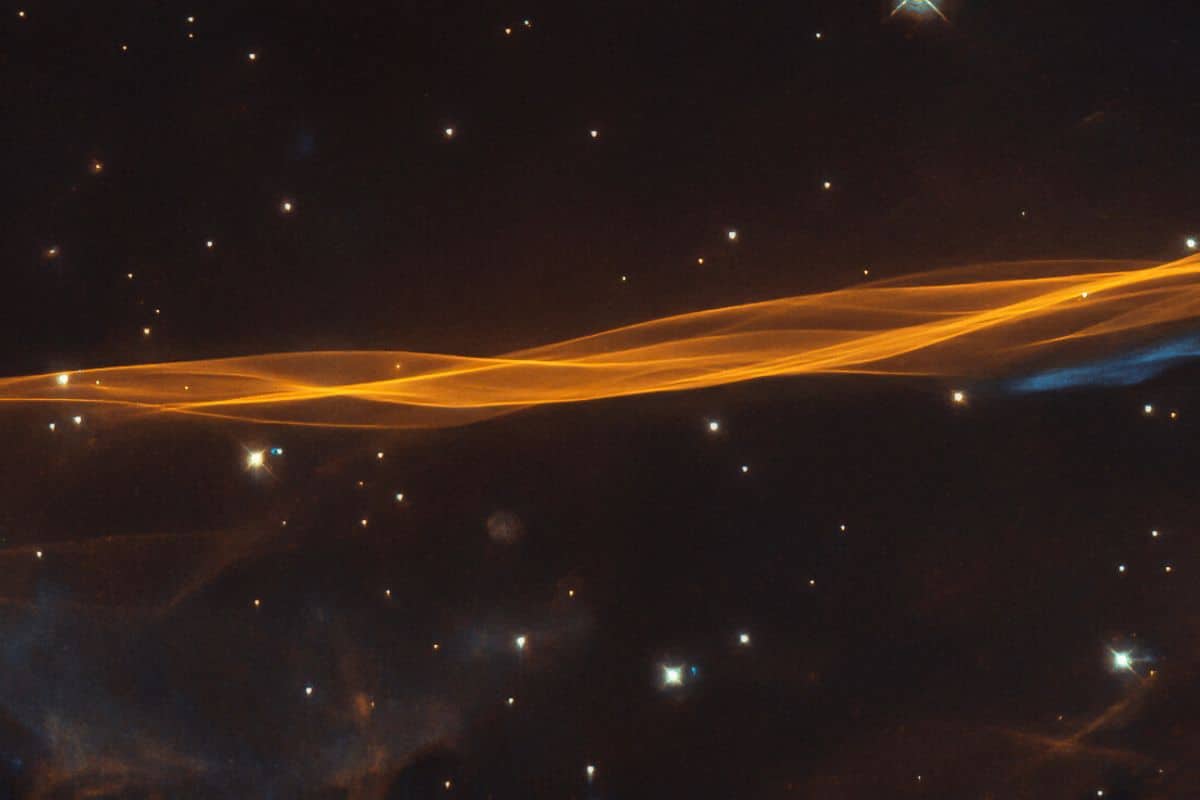This veil is the edge of a supernova explosion that occurred nearly ten thousand years ago.
This satellite picture of the week is a beautiful image of part of the supernova remnant in the constellation Swan. It’s about the Veil Nebula. This remnant is more than 2,000 light-years from Earth, but it spans more than 100 light-years. From Earth’s surface, the Veil Nebula (or Cirrus Nebula) is roughly the width of six full moons side by side. The Hubble telescope zooms in too far and is therefore unable to capture the entire nebula in a single image. That is why here we see small details of this beautiful thing.
Once upon a time, the site of a supernova remnant was home to a giant star. This giant was twenty times more massive than our Sun. Before this star exploded, the star produced a strong solar wind. Astronomers believe that electrically charged particles have blown a huge hole in the surrounding interstellar gas. After the supernova exploded, the shock wave from this explosion reached the resulting edge of the interstellar gas. The interaction between the shock wave and the edge led to the formation of the Colorful Veil Nebula.
Did you know that the Veil Nebula is still growing? The material in the outer edge of the supernova remnant is traveling at 350 kilometers per second.

Can’t get enough of it? In 2015, Hubble also captured a beautiful image of the Veil Nebula.







